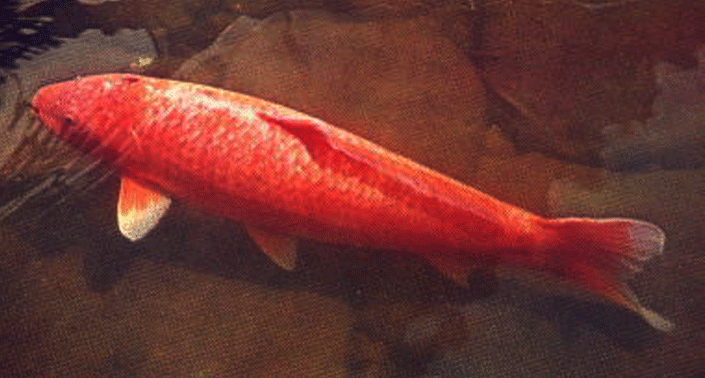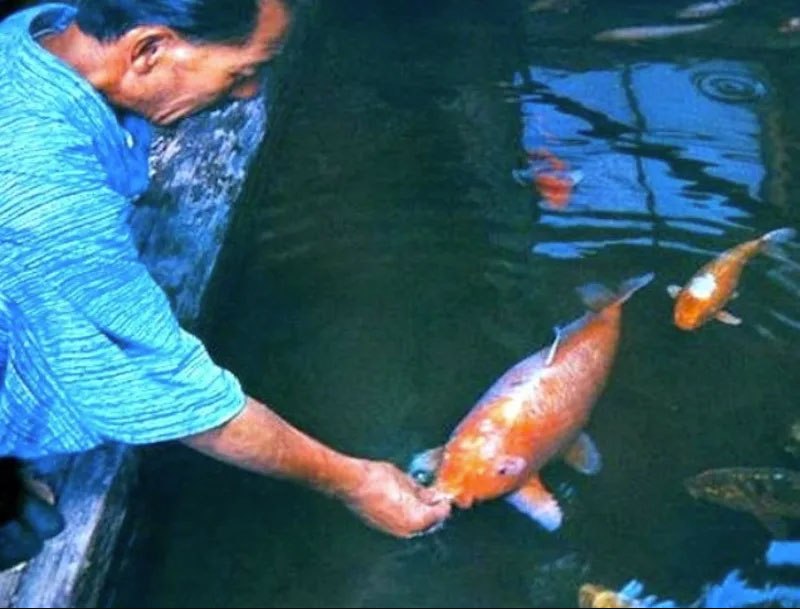Pet funerals for fish are common. In fact, many of us first learn about death upon getting ready for school or returning from playing outside and suddenly noticing a goldfish or guppy floating lifelessly against the edge of a fishbowl or beside the intake tube of a humming water filter.
Perhaps we won that goldfish at a state fair or local carnival. Or maybe your parents surrendered to your pleas for a 10-gallon aquarium with guppies – and neon tetras and swordtails, too, maybe – for your 9th birthday. For many pet lovers, fish are the first animals to enter and leave our lives.
Pet fish are small and can’t bark, purr, or sing so we often don’t bond with them the same way we do with other pets. But every time someone cries about a deceased dog, departed cat, or other pet, they most likely learned how to feel and mourn loss from the death of a fish earlier in their lives.

Pet fish have taught entire generations of people the truth about life and death. We are here for a short time. Love is a choice. Death is inevitable – and loving something is the best thing a person can do in life. Hanako, the female Japanese koi fish who lived for 226 years, has taught countless people those lessons. Quite appropriately, Hanako means “flower girl” in English, the symbol of both blossoming life and the expression of shared grief at funerals.
[More pet loss advice, insights, and resources: How to Write a Pet Eulogy, Pet Loss Condolences: What to Say and How to Say It, and Life After Loss: 5 Signs It’s Time for a New Pet.]
A Koi Story
Generations of families are typically bonded by stories of quirky aunts and crazy uncles, photographs of grandparents, and family heirlooms and possessions that are inherited and passed down from one era to the next. For the Koshihara family in Japan, however, a simple koi fish provided that bonding force – that rope of heritage and shared experience that connects people who never met. Hanako’s place in the family can be traced back to the nation’s legendary Edo Period, which lasted from 1603-1868.
For some perspective, Hanako was born in time to witness the Tokugawa Shogunate, when the samurai enforced a rigid social order over an isolated nation that shunned outsiders and their influences. An insular foreign policy, however, did not stop Japan from adopting the Chinese system of harvesting koi fish. This imported process, in fact, spawned rivers of colorful koi during the monsoon season in 1751 A.D. One of those bright tiny globs of swimming fins was Hanako – who would forever become a member of the Koshihara family.
A Fish with History

Hanako died at the age of 226 in 1977, the same years that the Star Wars franchise debuted in movie theaters. During her lifetime, which began in 1752, Hanako also shared the earth with famed explorer James Cooke, French military commander and revolutionary Napoleon, and the unfortunate souls who died in WWI and WWII. No one knows how Hanako felt about the Irish Potatoe Famine or the invention of the light bulb, but we do know that Hanako was alive and present on earth and shared her time during these notable events and historical figures.
The average lifespan for a goldfish is 10 to 15 years. The average lifespan for a guppy is about 2 years. The average lifespan for a koi outside of Japan is about 15 years, but the average lifespan of koi in Japan is 40 years. Hanako is the longest-living koi fish ever recorded in history.
Her age was determined in 1966 when Dr. Komei Koshihara – Hanako’s final owner – reached out to his friend Professor Masayoshi Hiro to examine two scales that were removed from Hanako. After two months of research, Professor Hiro determined Hanako’s age, making history and spreading both awe and admiration throughout the global koi community.
Pet Fish Owner Life Lessons
Hanako teaches us much about life and death. However, perhaps the most important lesson pet fish owners can learn from the 226-year-old fish and her generations of owners is that longevity and the desire to stay alive on earth can be attributed to two important factors: health and love.
Though the secret to Hanako’s long life has never been fully determined by science, most people agree that the clean and clear waters from the Japanese mountains that filled Hanako’s pond played an important part in her longevity, as did the love, care, and affection Hanako received from the Koshiara family, especially Dr. Komei Koshihara.
RIP Hanako and the Koshihara family of the past who took such care of her.
[Visit more fish eulogies, fish funerals, and fish obituaries.]
